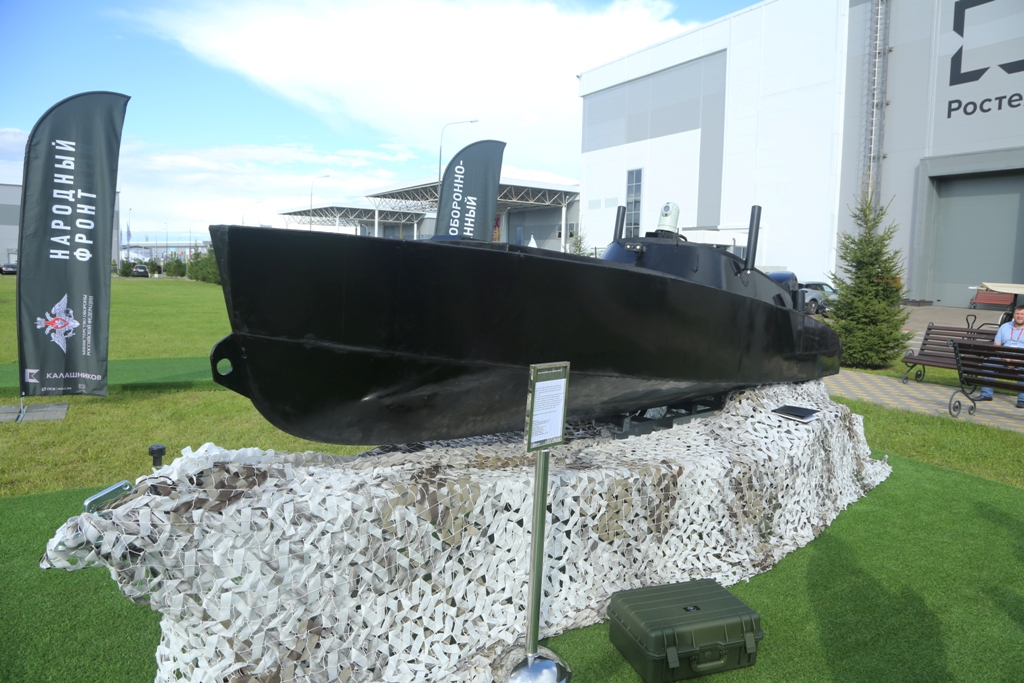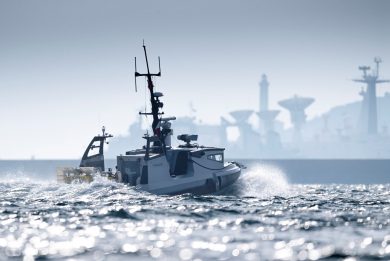
Army-2024 – Murena-300S unmanned surface vehicle unveiled
At the Army-2024 military exhibition the Design Bureau (KB) “Centre of unmanned systems” presented for the first time its Murena-300S unmanned surface vehicle (USV) or unmanned boat (BEK – bezekipazhnyi kater in Russian)
According to the developer, the Murena-300S USV is designed to defend Russian Navy facilities, conducting mining or demining operations, patrolling bases providing real-time video, carrying out reconnaissance of surface and coastal targets, and providing fire support for ground operations from the sea.
The multirole Murena-300S is 5.5 metres long, 1.5 metres wide, has a range of 500 km, and can reach a cruise speed of 45 km/h. It can carry a 500 kg payload and is capable of performing its various missions in conditions up to Sea State 4.
As the developers of the unmanned boat explained, it has constant high-speed access to the Internet on board, which allows the operator to control the boat and perform assigned tasks.
The boat is resistant to electronic warfare (EW), has an inertial navigation system, and its optronic sensor is fitted with a 40x video zoom. The sensor suite includes a thermal camera, an infrared system and a LIDAR (light detecting and ranging system). The boat is powered by a Mercury outboard motor.
The exhibition of several versions of Russian multirole USVs or unmanned boats at the Army-2024 exhibition, as well as at the Fleet-2024 International Maritime Defence Show (IMDS) held earlier in June, coincides with a series of attacks by Ukrainian Magura-5 strike unmanned boats on warships and bases of the Black Sea Fleet. These attacks are carried out using swarm tactics, surface ship being attacked from different directions. As a result, some ships were seriously damaged or sunk. It is quite obvious that the previous leadership of the Russian Ministry of Defence did not promptly identified the trends in the development of USVs and the fleet command did not worked out the tactics for defending surface ships from these means of attack, including those concerning swarm attacks. Moreover, many Russian warships classes do not feature the necessary highly effective anti-swarm means for destroying attacking USVs, especially at night.
The exhibition of several Russian combat USV or BEK projects in June-August of this year indicates that the views of the Russian military leadership on the role and place of USVs in modern military conflicts have undergone considerable changes. The Russian defence industry and private companies have begun to offer various options for facing those new threats. It is possible that if the proposed technical solutions are supported by the new military leadership, the Russian Navy will be able to neutralize the threat posed by combat USVs and, in turn, adopt similar means of combat at sea of its own design.
Photo by N. Morris



